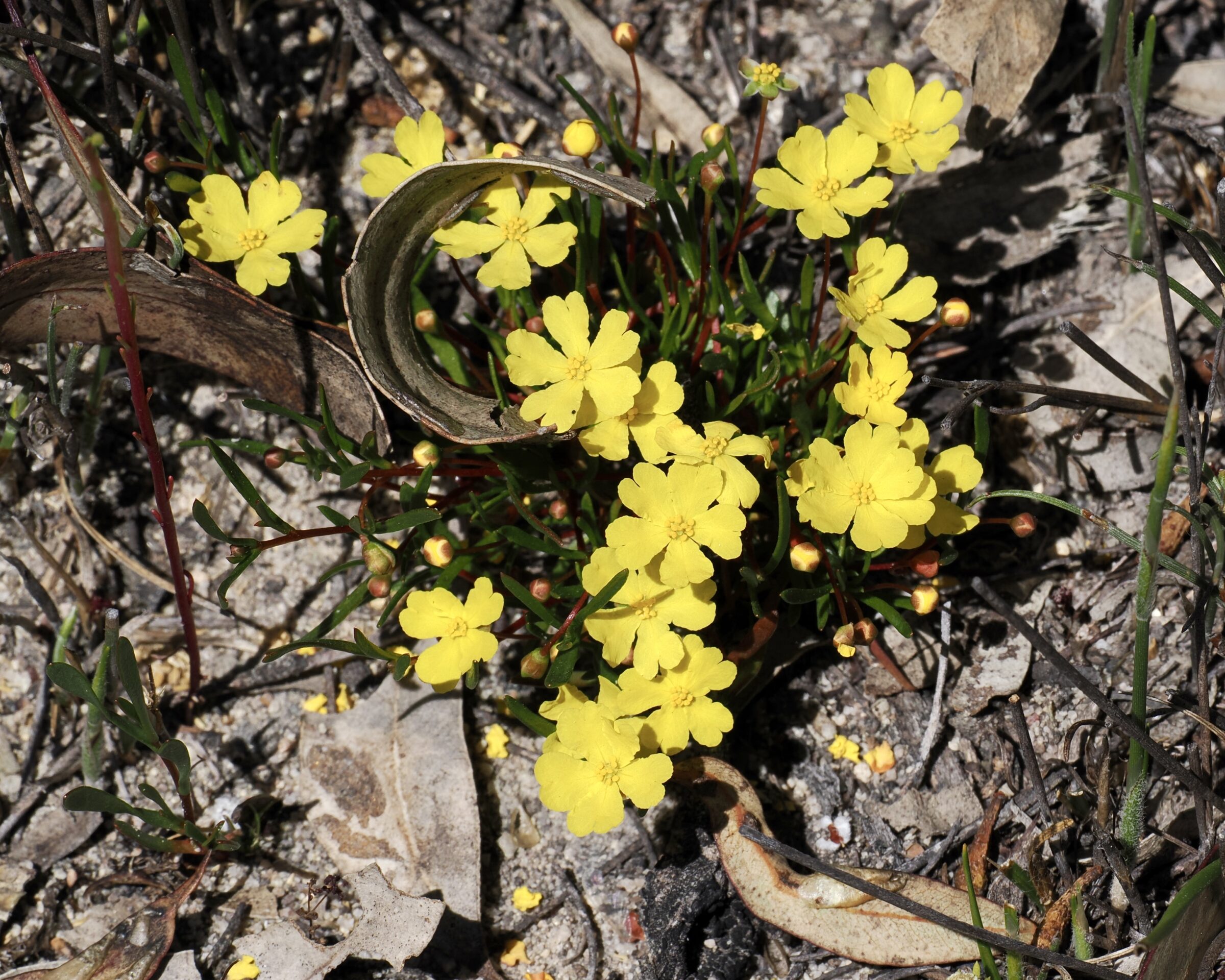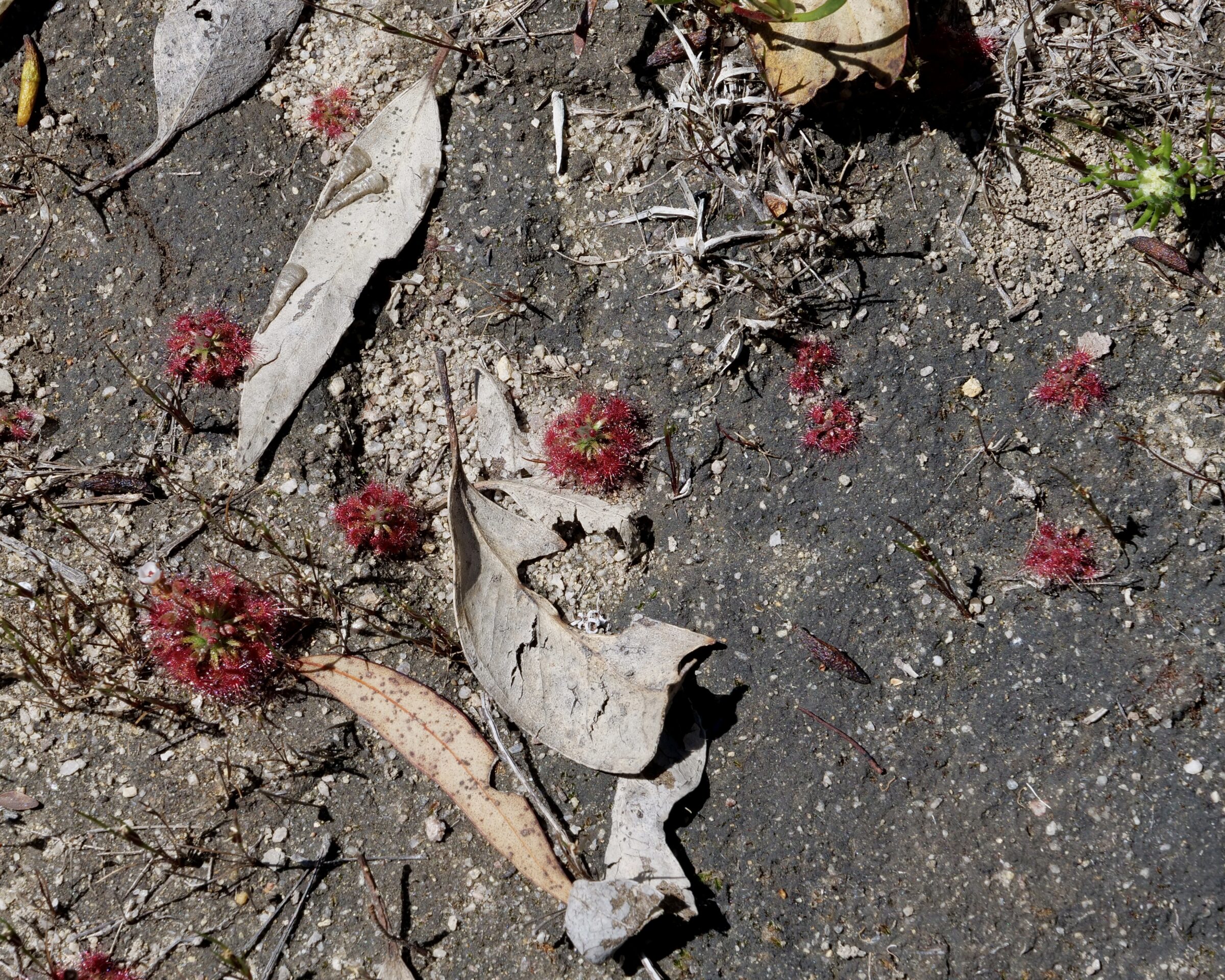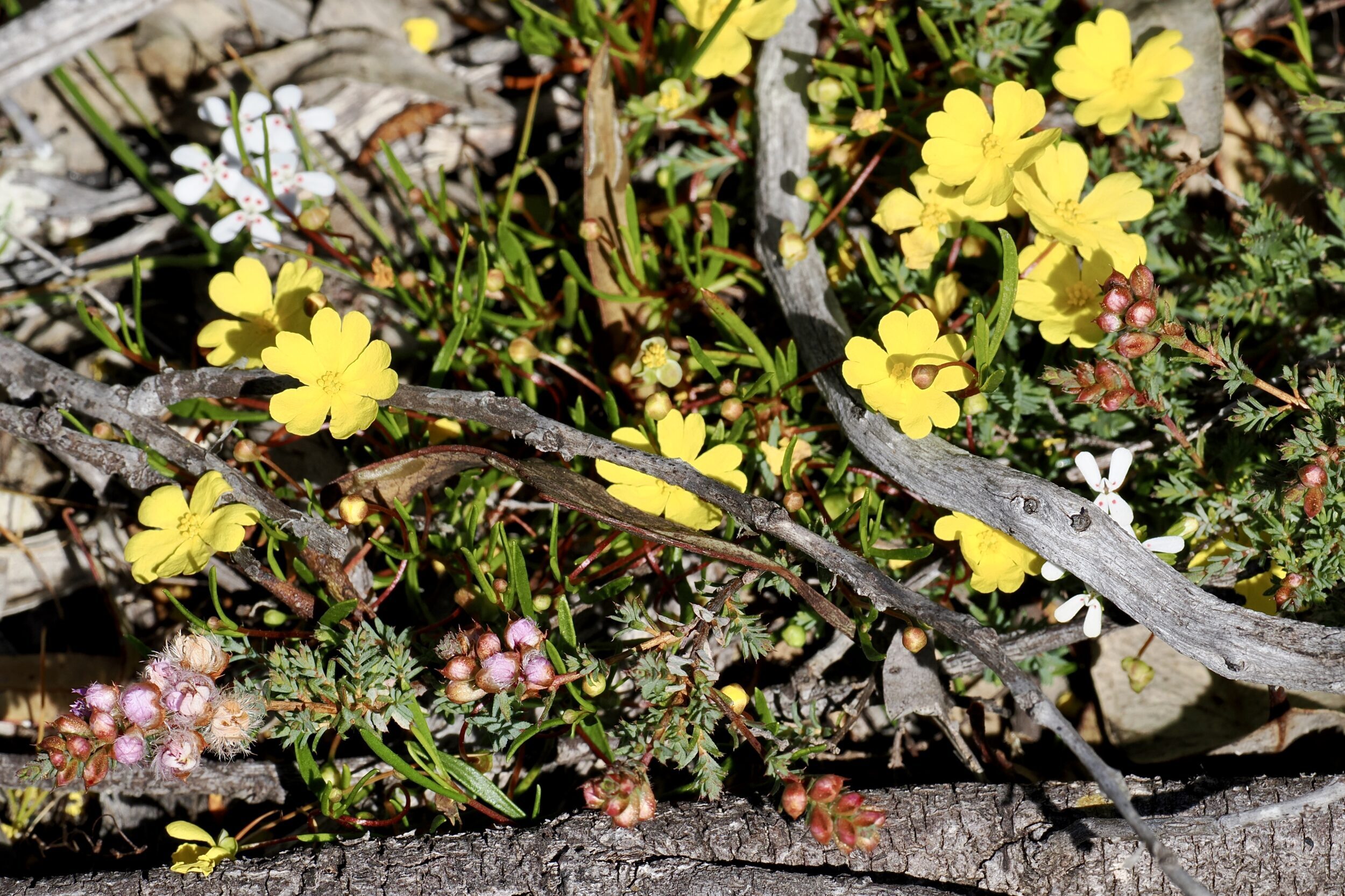This post’s photos were all taken on 30 October 2023, when the sun was high in an unclouded West Australian sky.
Each picture looks more-or-less straight down at the harshly-lit ground in so-called “northern Jarrah forest”, circa 60 kilometres southeast of Perth.
Much of this forest/woodland (this bit included) is in reality definitely-not-virgin, mixed forest/woodland, typically co-dominated by jarrah and marri trees, or by wandoo.
Even within a small, walkable area – as is the case here – the apparent “richness” or “poverty” of the forest floor is hugely variable, depending on precisely where one is standing and on what is going on at the particular time, within any particular year.
”Exactly the same place” can appear “utterly unlike itself”, from one time to another.
In the featured image the white colour is provided by trigger plants, the yellow by some species of Hibbertia, and the pink by one of the Verticordia.
Hibbertia, commonly known as “guinea flowers”, is a genus of more than 400 species, most of which are endemic to Australia.
Verticordia are commonly called “feather flowers”; the genus has more than 100 members. All but two of them occur naturally only in southwest Western Australia.
Australia’s southwestern corner has some of the world’s oldest, poorest soils, and a very demanding/difficult/variable climate.
Paradoxically, these “problems” are keys to why it has such an astonishing abundance of unique flowering plants, and to why its “flowering events” can be so “explosive” and so unpredictable.

I think that the flowers above are some kind of Hibbertia.
Below, punctuating recently-damp but rapidly-drying ground, are some very tiny carnivores.
Southwest WA is the known universe’s hotspot for meat-eating plants.

Drosera – the insect-eaters known as ”sundews” – have species on every continent, bar Antarctica.
This genus has a rapidly-growing number of “recognised” members; different sources give widely-divergent species-counts.
However, by every count, Australia is home to half or more of the global total. Southwest WA-endemics account for the overwhelming majority of the Australian species.
Size and appearance are highly diverse: the pictured Drosera are tiny, but individuals of some much larger species climb so high that an adult human does not need to bend down in order to be “face to face” with their (beautiful) flowers.
